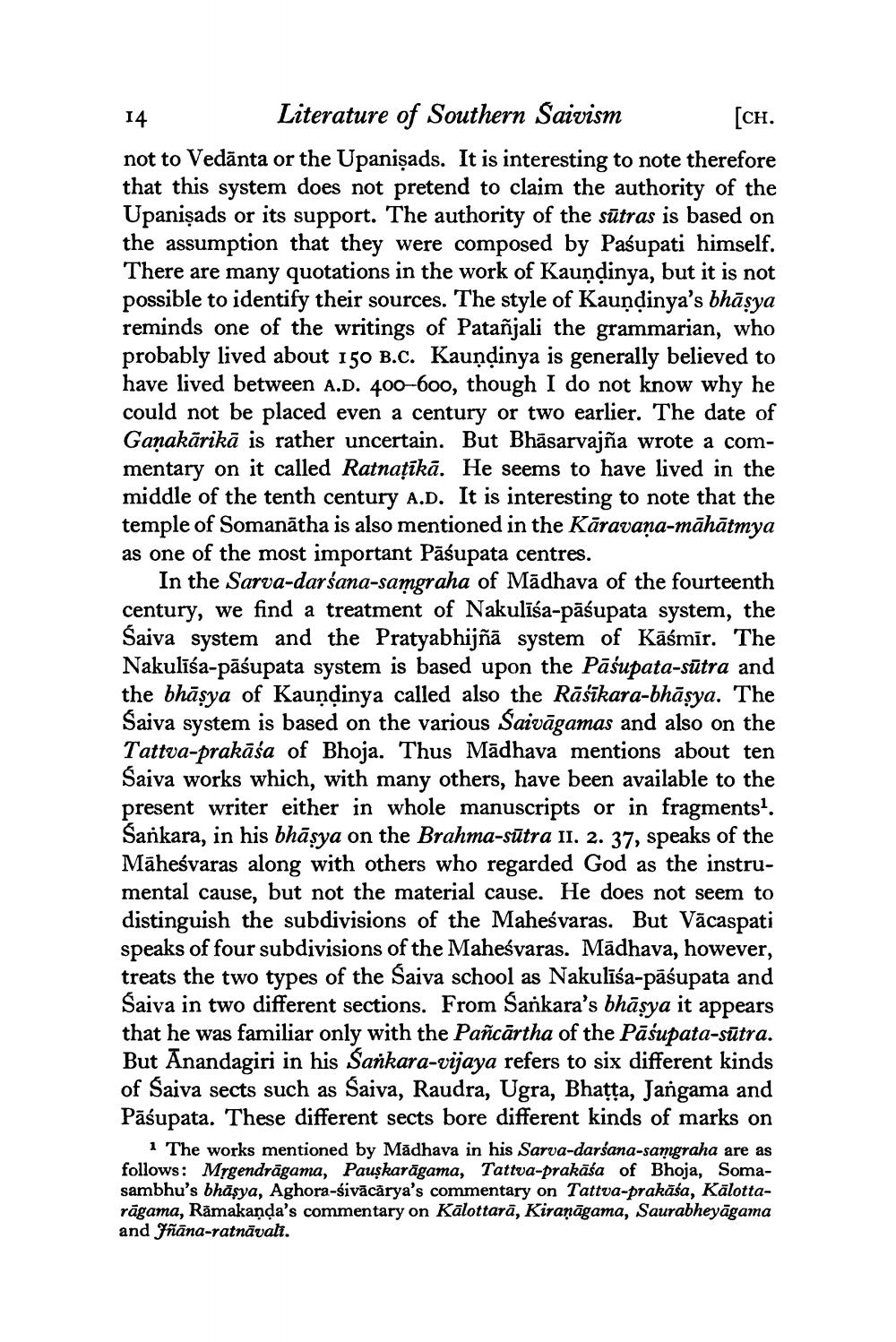________________
14 Literature of Southern Saivism
[CH. not to Vedānta or the Upanişads. It is interesting to note therefore that this system does not pretend to claim the authority of the Upanişads or its support. The authority of the sūtras is based on the assumption that they were composed by Pasupati himself. There are many quotations in the work of Kauņdinya, but it is not possible to identify their sources. The style of Kauņdinya's bhāsya reminds one of the writings of Patañjali the grammarian, who probably lived about 150 B.C. Kauņdinya is generally believed to have lived between A.D. 400-600, though I do not know why he could not be placed even a century or two earlier. The date of Ganakārikā is rather uncertain. But Bhāsarvajña wrote a commentary on it called Ratnațīkā. He seems to have lived in the middle of the tenth century A.D. It is interesting to note that the temple of Somanātha is also mentioned in the Kāravana-māhātmya as one of the most important Pāśupata centres.
In the Sarva-darśana-samgraha of Mādhava of the fourteenth century, we find a treatment of Nakulīša-pāśupata system, the Saiva system and the Pratyabhijñā system of Kāśmīr. The Nakulīša-pāśupata system is based upon the Pāśupata-sūtra and the bhāșya of Kaundinya called also the Rāšīkara-bhāșya. The Saiva system is based on the various Saivāgamas and also on the Tattva-prakāśa of Bhoja. Thus Mādhava mentions about ten Saiva works which, with many others, have been available to the present writer either in whole manuscripts or in fragmentsé. Sarkara, in his bhāsya on the Brahma-sūtra II. 2. 37, speaks of the Māheśvaras along with others who regarded God as the instrumental cause, but not the material cause. He does not seem to distinguish the subdivisions of the Maheśvaras. But Vācaspati speaks of four subdivisions of the Maheśvaras. Madhava, however, treats the two types of the Saiva school as Nakulīša-pāśupata and Saiva in two different sections. From Sankara's bhāsya it appears that he was familiar only with the Pañcārtha of the Pāśupata-sūtra. But Anandagiri in his Sankara-vijaya refers to six different kinds of Saiva sects such as Saiva, Raudra, Ugra, Bhatta, Jangama and Pāśupata. These different sects bore different kinds of marks on
1 The works mentioned by Madhava in his Sarva-darsana-samgraha are as follows: Mrgendrāgama, Pauşkarāgama, Tattva-prakāśa of Bhoja, Somasambhu's bhāsya, Aghora-śivācārya's commentary on Tattva-prakāśa, Kālottarāgama, Rāmakanda's commentary on Kālottarā, Kiranāgama, Saurabheyāgama and Fñāna-ratnāvali.




